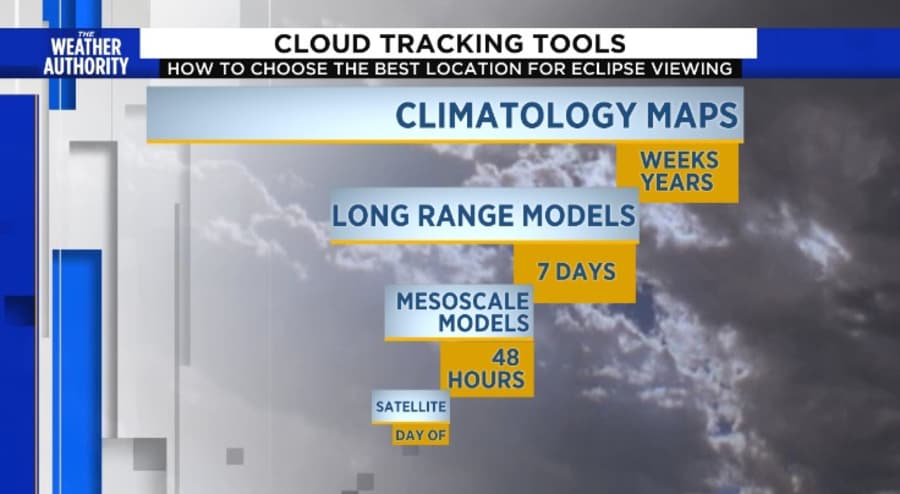Witnessing a total solar eclipse is a breathtaking experience, but pesky clouds can ruin the show.
Choosing the best location for viewing the eclipse should focus on where the cloud cover will be lowest for skygazers.
These websites can be your secret weapon for maximizing your chances of clear skies on the big day!
Planning ahead: months or years in advance
Over longer timeframes, climatology stands as the primary tool for estimating cloud conditions.
Climatology relies on historical weather data compiled over years or decades to gauge the likelihood of cloud cover on a given day and time. It does not predict an actual forecast.
- Climate is Your Friend: Use websites like NOAA’s National Centers for Environmental Information (NCEI) to explore historical cloud cover data for your region. This helps understand the usual cloud patterns for the eclipse timeframe.
- Example: Planning for the April 8th eclipse? Check NCEI data to see if April typically brings clear skies to your area.
As a climatological general rule: For Jacksonville, during the winter months, cloud cover tends to be lower compared to the summer months. The contrast in average cloud cover between winter and summer in North Florida can significantly impact the viewing experience of an eclipse.

Getting closer: weeks before the eclipse
As the event draws nearer, long-range global models become increasingly valuable. These models provide forecasts regarding the movement of major weather systems, such as low-pressure areas and fronts, which can influence cloud cover.
- Long-Range Forecasts: Websites like NOAA offer forecasts extending up to a week. These can give you a heads-up on major weather systems that might bring clouds.
Nailing down the details: days leading up
Transitioning to shorter-range regional models as the target date approaches within a few days becomes imperative. These models offer higher-resolution forecasts tailored to our specific areas, providing more detailed predictions of cloud cover patterns.
- Regional Models for High-Resolution Details: As the eclipse nears, switch to models that are shorter range but more detailed. These provide more specific cloud cover predictions for your area.
- Pro Tip: Look for models that account for the eclipse itself, like NOAA’s HRRR model.
The Big Day: Real-Time Cloud Watch
- Combine with Ground Data: For the most accurate view, use satellite images alongside weather station data to get a complete picture of cloud cover at eclipse time.
By using these website tools strategically, you can become a cloud-forecasting pro and significantly increase your chances of witnessing the total solar eclipse in all its glory!



